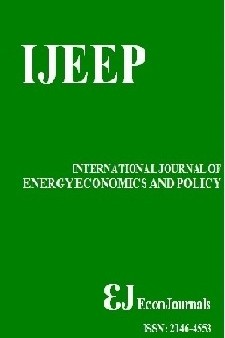Will be there New CO2 Emitters in the Future? Evidence of Long-run Panel Co-integration for N-11 Countries
Will be there New CO2 Emitters in the Future? Evidence of Long-run Panel Co-integration for N-11 Countries
- Başlangıç: 2011
- Yayıncı: İlhan ÖZTÜRK
Dana Saylauovna BEKNİYAZOVA, Arman AKİSHEV, İldar KALİYEV, Gulnara Turganovna SHAMSHUDİNOVA, Meiramgul Armiyanovna ALTYBASSAROVA
Demand for Natural Gas in Food and Beverage Industries of Iran
Analysis of Income Elasticities of Brazil’s Energy Matrix
Marcos Gonçalves PERRONİ, Sérgio Eduardo Gouvêa Da COSTA, Wesley Vieira Da SİLVA, Edson Pinheiro De LİMA, Claudimar Pereira Da VEİGA
Maliheh ASHENA, Hossein SADEGHİ, Kazem YAVARİ, Reza NAJARZADEH
Elasticity of Agricultural Prices in Russia: An Empirical Study of Energy and Monetary Channels
Munshi Naser Ibne Afzal, Jeff Gow
The Changing Energy Intensity in Indian Economy: A Sector-level Analysis Based on Input-Output Model
China in Innovative Development of Alternative Energy Advanced Industrial Technologies
Mihail Nikolaevich DUDİN, еvgenia еvgenevna FROLOVA, Petr Aleksandrovich KUCHERENKO, Vitaly Aleksandrovic VERNİKOV, Natalia Andreevna VOYKOVA
Uncertainty of Oil Proved Reserves and Economic Growth in Iran
Elaheh Asadi Mehmandosti, Fatemeh Bazzazan, Mir Hossein Mousavi
